Classification of FPV Drones
There are many different types of FPV drones. They can be classified by their size and purpose, since each type of drone is suited for a slightly different use. The size of a drone is often defined by the maximum propeller size it can fit. Another common designation is the diagonal motor distance in millimeters.
Tinywhoop
Tinywhoops are the smallest FPV drones. A Tinywhoop has ducted propellers, weighs around 20–30 g, and is powered by a 1S battery. Due to their low weight, flying a Tinywhoop is completely safe. They are designed mainly for indoor flying, which makes them a popular choice during the winter months.
The most common models feature a 65 mm motor-to-motor distance and 31 mm props, suitable mainly for flying in apartments or small indoor spaces. A larger variant is the 75 mm Tinywhoop with 40 mm (1.6") props, offering higher speed and power. Flight time is typically around 2–4 minutes, depending on the flight style and battery capacity (usually 300–550 mAh). Average flight speed ranges between 25–50 km/h. Despite their small size, Tinywhoops deliver surprisingly agile flight performance and their lightweight frames can withstand frequent crashes without damage.
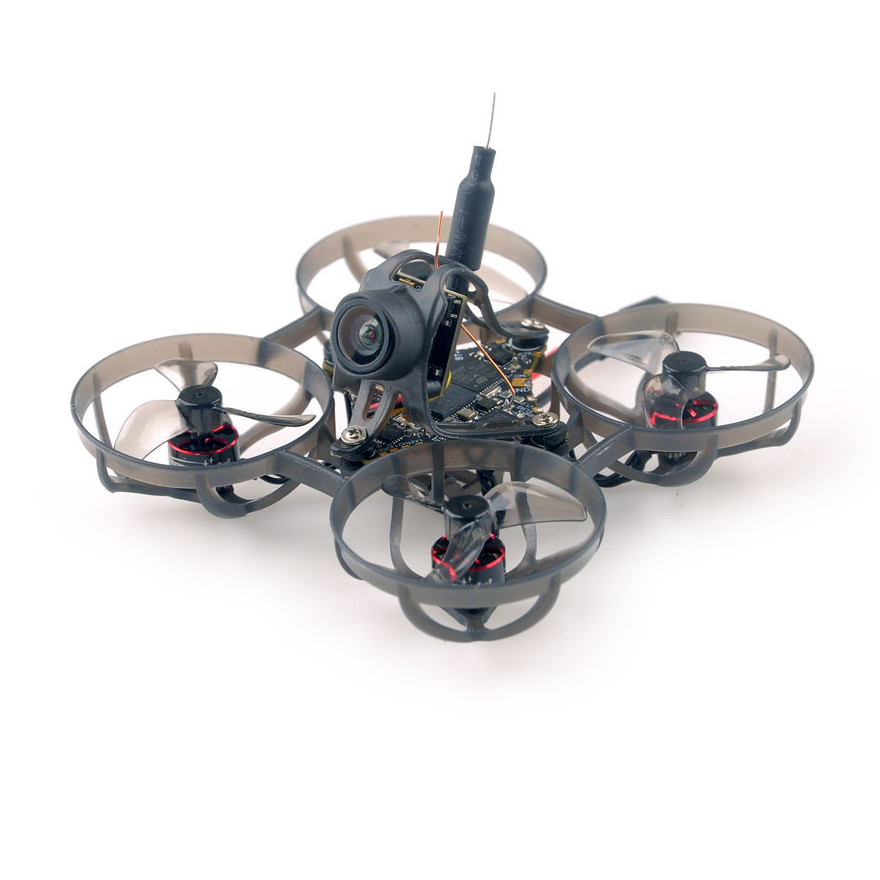
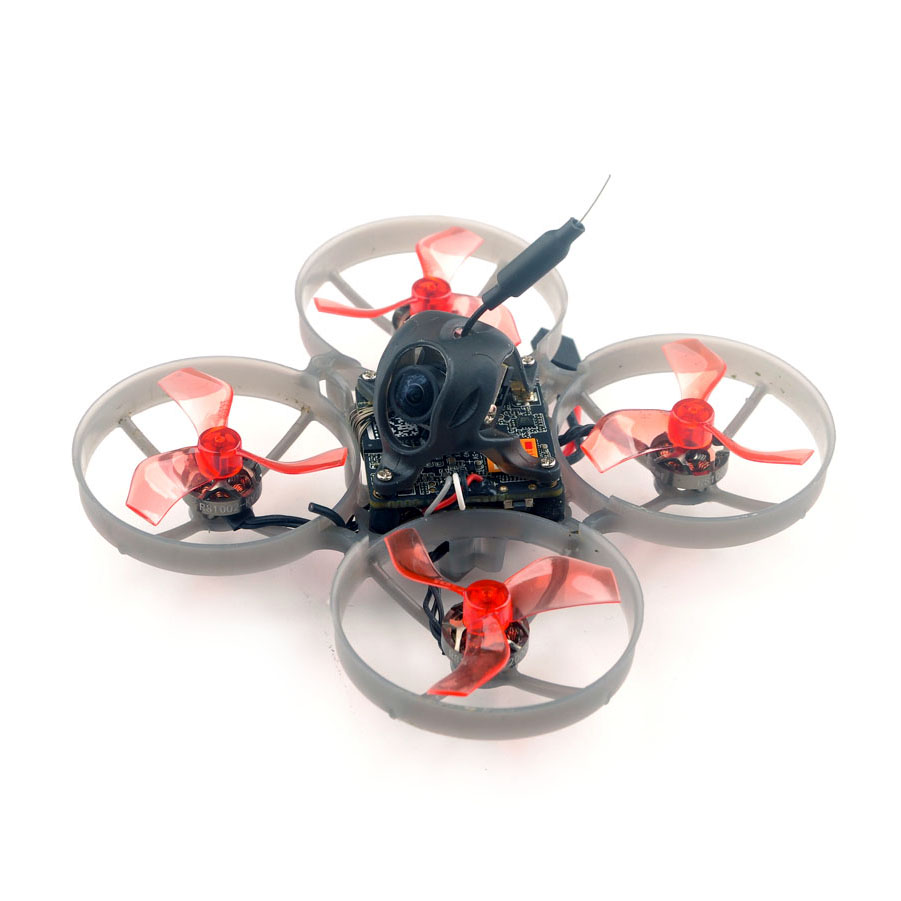
Cinewhoop
The term "Whoop" is commonly used for any drone with ducted propellers. Cinewhoops are the bigger siblings of Tinywhoops. They are primarily intended for carrying an HD camera such as a GoPro to capture FPV cinematic footage. Thanks to the propeller guards, they can be flown relatively safely near people or indoors. They are excellent filmmaking tools, but not ideal for casual flying. The ducts add extra weight, making Cinewhoops less agile, louder, and with shorter flight times. They also require more effort to service. Typical sizes range from 2" to 3.5", with plastic prop guards.
Smaller 2–2.5" Cinewhoops are best suited for indoor use, usually flying with a digital video system (DJI O4, Walksnail) or carrying a lightweight HD camera like a Naked GoPro or Runcam Thumb. The most common size is 3", suitable for both indoor and outdoor flying. It can carry a lightweight HD camera or even a full-size GoPro. Larger and more powerful 3.5" versions can handle standard GoPro cameras and are better suited for outdoor cinematic flying.
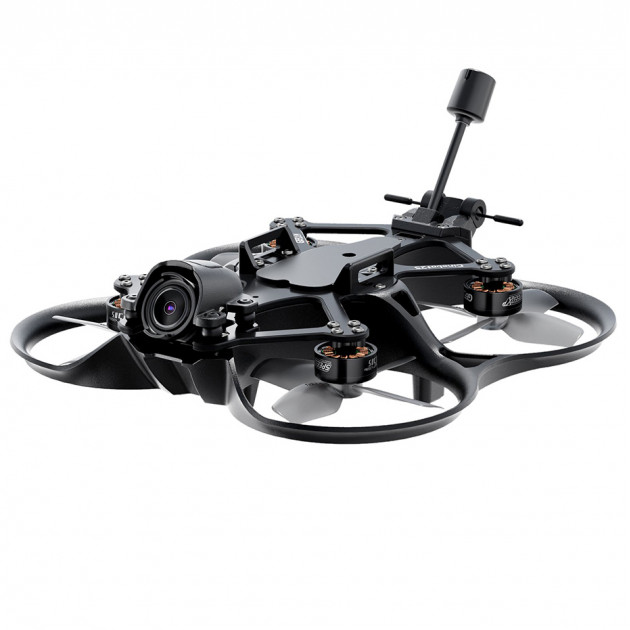

Freestyle
The most common and versatile category of FPV drones. Freestyle drones typically use 5–6" propellers. The battery is usually mounted on top, and the front section of the frame holds an HD action camera such as a GoPro or Insta360. Thanks to their sturdy and spacious frames, these drones are easy to build, tune, and repair. They are usually equipped with 2207–2506 motors and 6S LiPo batteries with a capacity of about 1300–1800 mAh. The total flying weight, including battery and camera, is typically 550–800 g. Flight speed in freestyle mode ranges between 80–120 km/h, while top speed can exceed 170 km/h. Flight time depends on flying style — around 3–5 minutes for aggressive flying and up to 7 minutes for relaxed cruising. Freestyle drones are popular for their durability, precise control, and ability to perform both acrobatics and cinematic maneuvers.
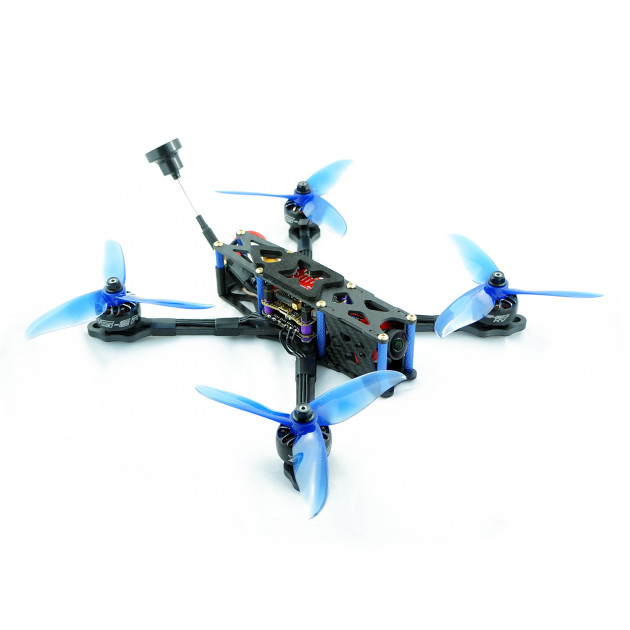
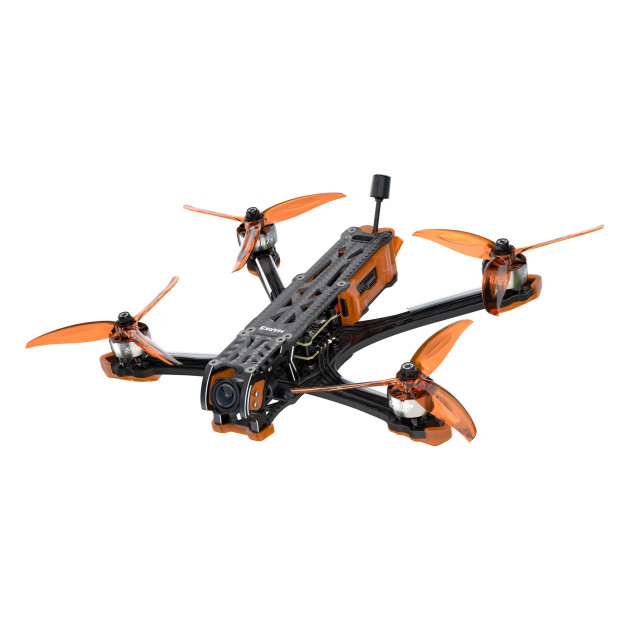
Racing
Racing drones are designed for one purpose — to be as fast and agile as possible. They typically use 5" props and feature compact, lightweight, and durable frames that can withstand heavy crashes. The design minimizes drag and weight, with components placed to ensure perfect balance and stability in flight.
A typical racing drone uses 2207 motors with 1800–2100 KV and is powered by a 6S LiPo battery of 1000–1300 mAh. The dry weight is around 300–350 g, and about 450–550 g with the battery. With an incredible power-to-weight ratio, they can accelerate from 0 to 100 km/h in less than a second and reach top speeds of up to 200 km/h.
In racing conditions, flight time is about 1.5–2 minutes, as pilots fly at full throttle, quickly draining the battery. Racing frames often feature replaceable arms for quick repairs after crashes. To save weight, HD cameras are usually not installed — low-latency FPV video feed is the priority.
Racing drones are used in FPV competitions where pilots race against the clock. They require a high level of skill, precise tuning, and extremely responsive control.


Micro
The Micro category includes small drones with 2" to 4" propellers. These compact drones are an ideal balance between performance and safety. Their low weight and small size make them great for flying in parks, gardens, or even gyms. Compared to traditional 5" drones, they are significantly quieter and safer.
Micro drones can be configured for freestyle or racing. They often use lightweight Toothpick-style frames to minimize weight and maximize agility. Their total weight, including battery, ranges between 120–350 g, and they use 2–4S LiPo batteries with a capacity of 450–850 mAh.
Average flight speed is around 60–100 km/h, with high-performance builds exceeding 150 km/h. Flight time varies between 4–6 minutes for gentle flying and 2–3 minutes for aggressive freestyle.
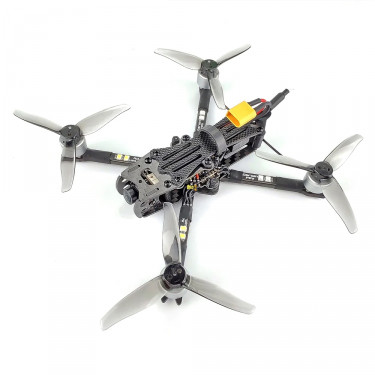
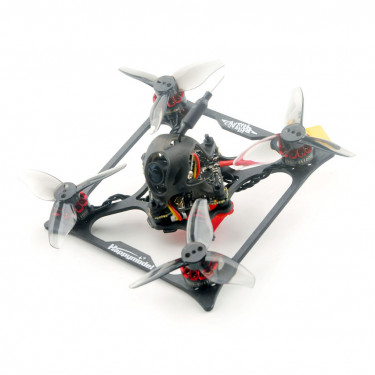
Long Range
Long-range drones are designed for long-distance and endurance flights. They usually have 7–10" propellers, providing excellent efficiency and 15–30 minutes of flight time — sometimes over 40 minutes. These drones can carry HD cameras, GoPros, or even professional cinema cameras.
The frames are larger and more stable, often including mounts for GPS modules, telemetry systems, and high-capacity batteries. Motors usually have lower KV ratings (around 1200–1700 KV on 6S LiPo) for improved efficiency.
They are powered by large LiPo packs (e.g., 6S 3000–5000 mAh) or Li-ion packs (up to 10 000 mAh) for extreme flight duration at lower power. Total takeoff weight, including camera, ranges between 900–1800 g.
Typical cruise speed is 60–100 km/h, with top speeds up to 140 km/h. These drones are often equipped with advanced features like Return-to-Home (RTH) and GPS failsafe systems.
A long-range drone is ideal for pilots seeking extended flight experience and exploration of distant locations. Downsides include lower agility, the need for careful mission planning, and challenging transport due to size and weight.

Cinelifter
Cinelifters are large professional drones designed to carry heavy cinema cameras such as Blackmagic or RED Komodo. They often use an X8 configuration — eight motors on four arms (two stacked vertically). This provides greater stability, lift capacity, and redundancy. Due to their size and noise, they are mainly used outdoors for professional filming.
![]()
Speed drones
Speed drones are built with one goal — to reach maximum velocity and aerodynamic efficiency. They can achieve speeds between 200–400 km/h (the 2025 world record is 585 km/h). The frames have streamlined aerodynamic shapes with thin arms and minimal drag.
Unlike typical FPV drones, their electronics are compactly aligned in the drone’s centerline, and the camera is tilted significantly (up to 60–80°) to match the high flight speed. They use high-RPM motors that generate extreme thrust. Due to their narrow specialization, these drones are not suitable for freestyle or cinematic flying — they are extremely sensitive to control and require experienced pilots.

Next chapter: Batteries and charging
